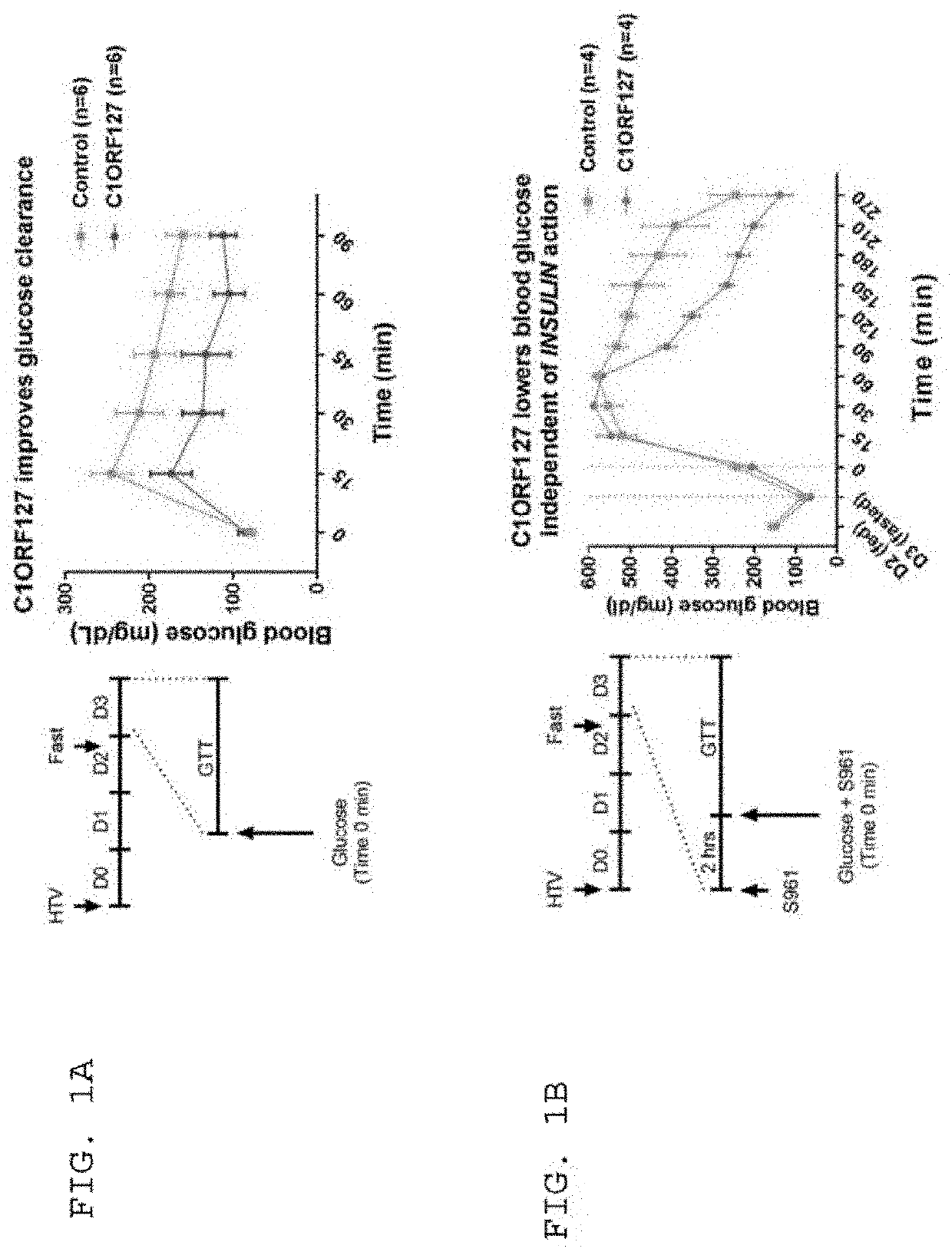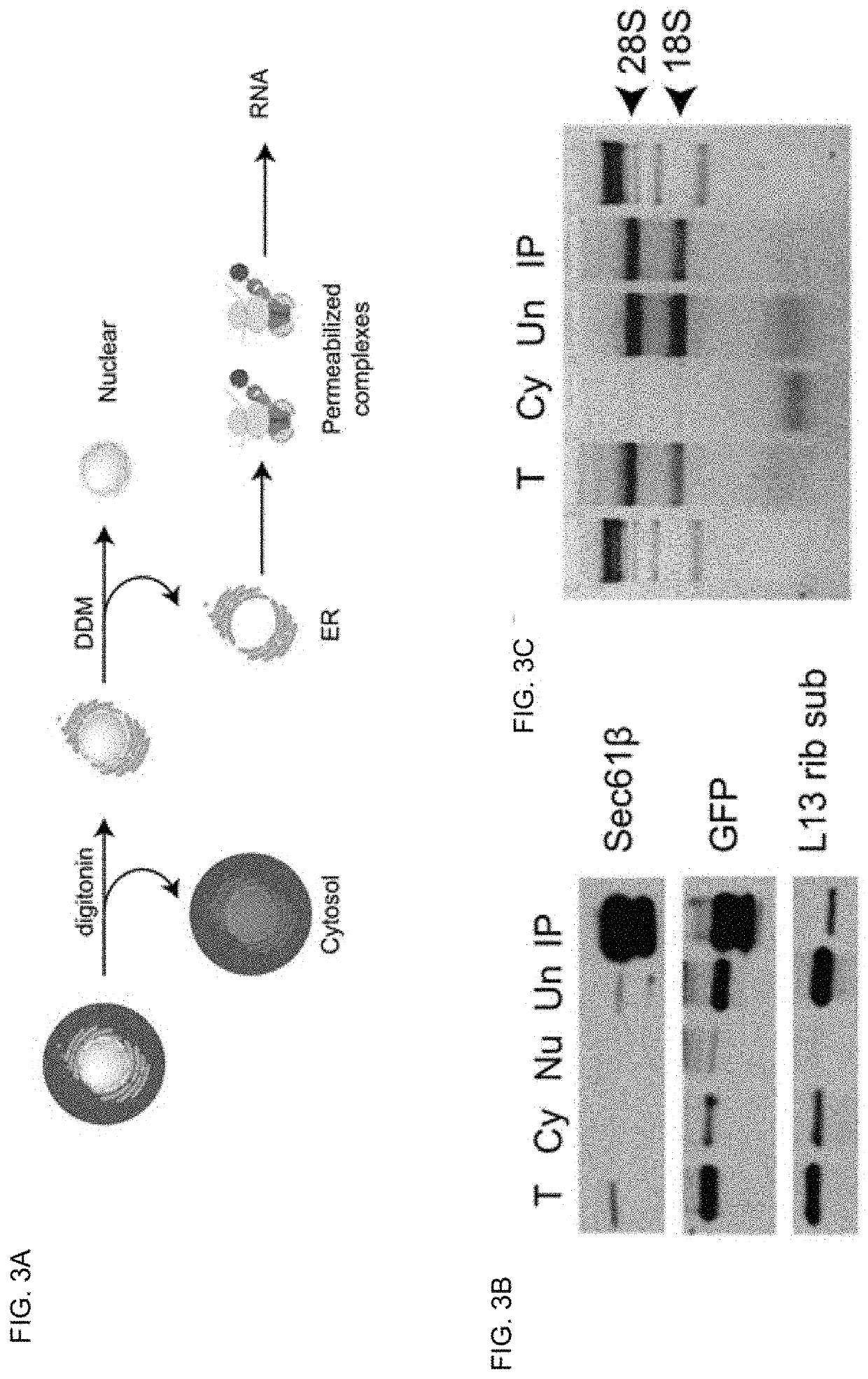Methods and compositions for treating diabetes, and methods for enriching mRNA coding for secreted proteins
- Summary
- Abstract
- Description
- Claims
- Application Information
AI Technical Summary
Benefits of technology
Problems solved by technology
Method used
Image
Examples
example 1
[0178]Research Goal: To Find Novel Hormones to Cure Diabetes
[0179]A protocol to direct the differentiation of human embryonic or induced pluripotent stem cells into functional, insulin expressing beta-cells was developed previously1. These Stem Cell-derived beta-cells (SC-beta) can be used to study the development of beta-cells, beta cell function and physiology and they have the potential to treat diabetes by cell transplantation.
[0180]Hormones, including insulin, are secreted proteins with potent roles in controlling metabolism, cellular differentiation, and disease. mRNAs encoding secreted or transmembrane proteins transit through the rough endoplasmic reticulum. To identify novel secreted and transmembrane proteins, a technique called Endoplasmic Reticulum Sequencing (ER-seq) has been developed that enriches RNAs of secreted / transmembrane proteins by physically isolating actively translating ribosomes at the surface of the endoplasmic reticulum. To find novel hormones that regul...
example 2
[0190]The biogenesis of hormones is directed by endoplasmic reticulum (ER)-localized ribosomes actively translating their mRNAs at the translocon complex (Mandon et al., 2013; Ogg et al., 1995; Rapoport et al., 2007). Most studies identifying novel secreted factors and hormones have relied on algorithms that predict canonical topogenic signals (Diehn et al., 2000; Emanuelsson et al., 2007; Kall et al., 2004; Meinken et al., 2015, Petersen et al., 2011). Although informative, these computational predictions do not efficiently account for a significant fraction of genes that are part of this functional class (Jan et al., 2014). Recent efforts to characterize the complement of mRNAs of secreted factors relied on the biochemical isolation of ER-localized ribosomes (Jan et al., 2014; Fazl et al., 2019; Reid et al., 2014). However, these efforts have been limited to yeast and cancer cells in vitro (Jan et al., 2014; Fazl et al., 2019; Reid et al., 2014). Here is described a protocol calle...
example 3
[0199]GreenER Reporter Mouse
[0200]A mouse Cre-dependent reporter transgene with the AcGFP-SEC61b fusion protein described above (ROSA-floxed-STOP-floxed-AcGFP-SEC61b) is developed herein and called the GreenER reporter. This mouse has been crossed to Insulin-Cre mice to generate B-cells whose endoplasmic reticulum fluoresces green, enabling the application of the ER-seq technology described above. This B-cell specific GreenER strain can be crossed into the NOD model of Type 1 diabetes, giving researchers the ability of finding secreted biomarkers during the course of disease.
[0201]Additionally, since some of the stressors common to Type 1 and Type 2 diabetes may be similar, this strain maybe crossed into models of Type 2 diabetes such as the ob / ob and the db / db models.
[0202]For mouse ER-seq, the genetic component is the targeting of Green Fluorescent Protein (GFP) fused to an integral component of the ER translocon, Sec61b, to the ROSA locus. Here, a GFP-Sec61b fusion protein was lo...
PUM
 Login to View More
Login to View More Abstract
Description
Claims
Application Information
 Login to View More
Login to View More - R&D
- Intellectual Property
- Life Sciences
- Materials
- Tech Scout
- Unparalleled Data Quality
- Higher Quality Content
- 60% Fewer Hallucinations
Browse by: Latest US Patents, China's latest patents, Technical Efficacy Thesaurus, Application Domain, Technology Topic, Popular Technical Reports.
© 2025 PatSnap. All rights reserved.Legal|Privacy policy|Modern Slavery Act Transparency Statement|Sitemap|About US| Contact US: help@patsnap.com



